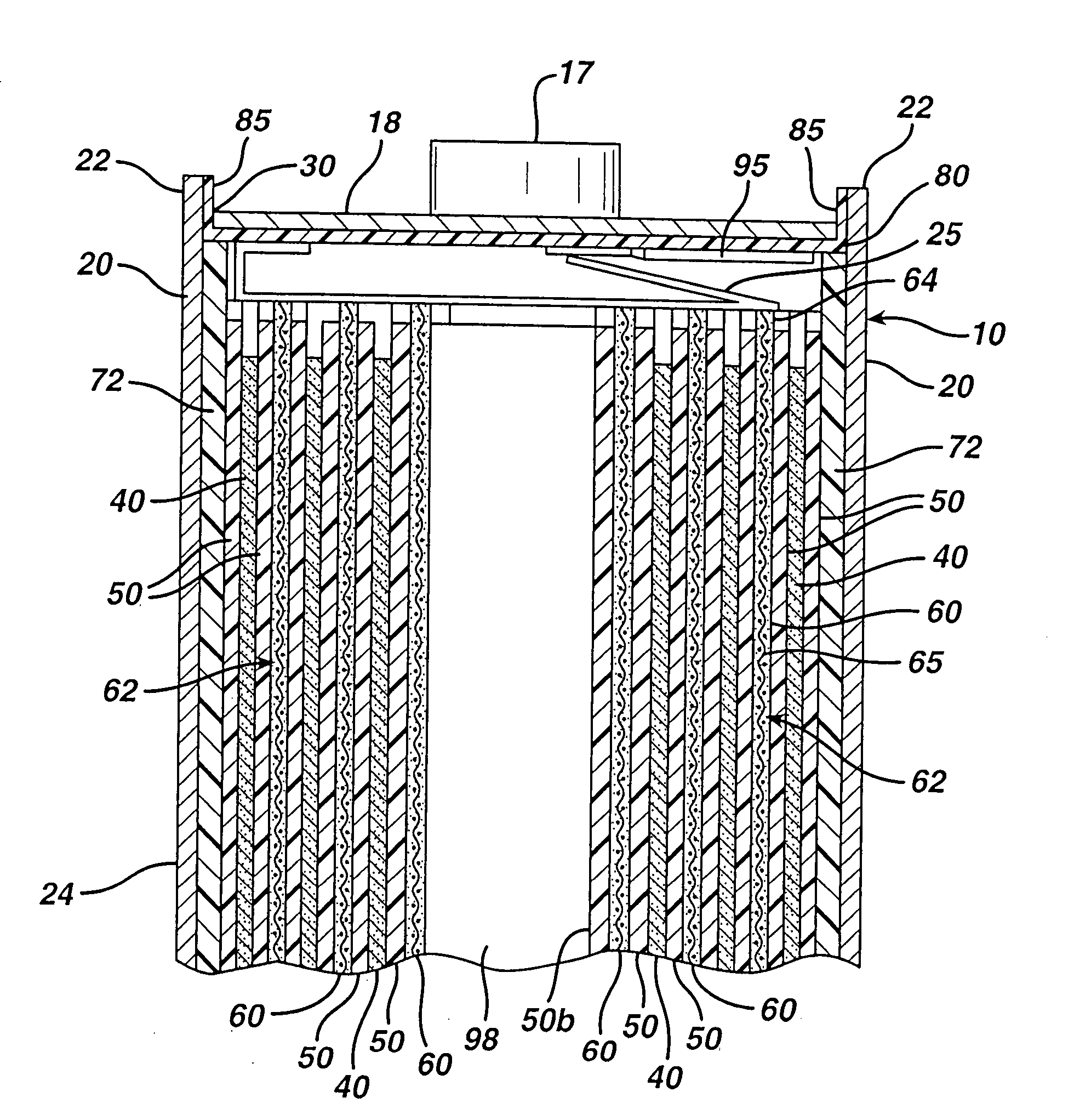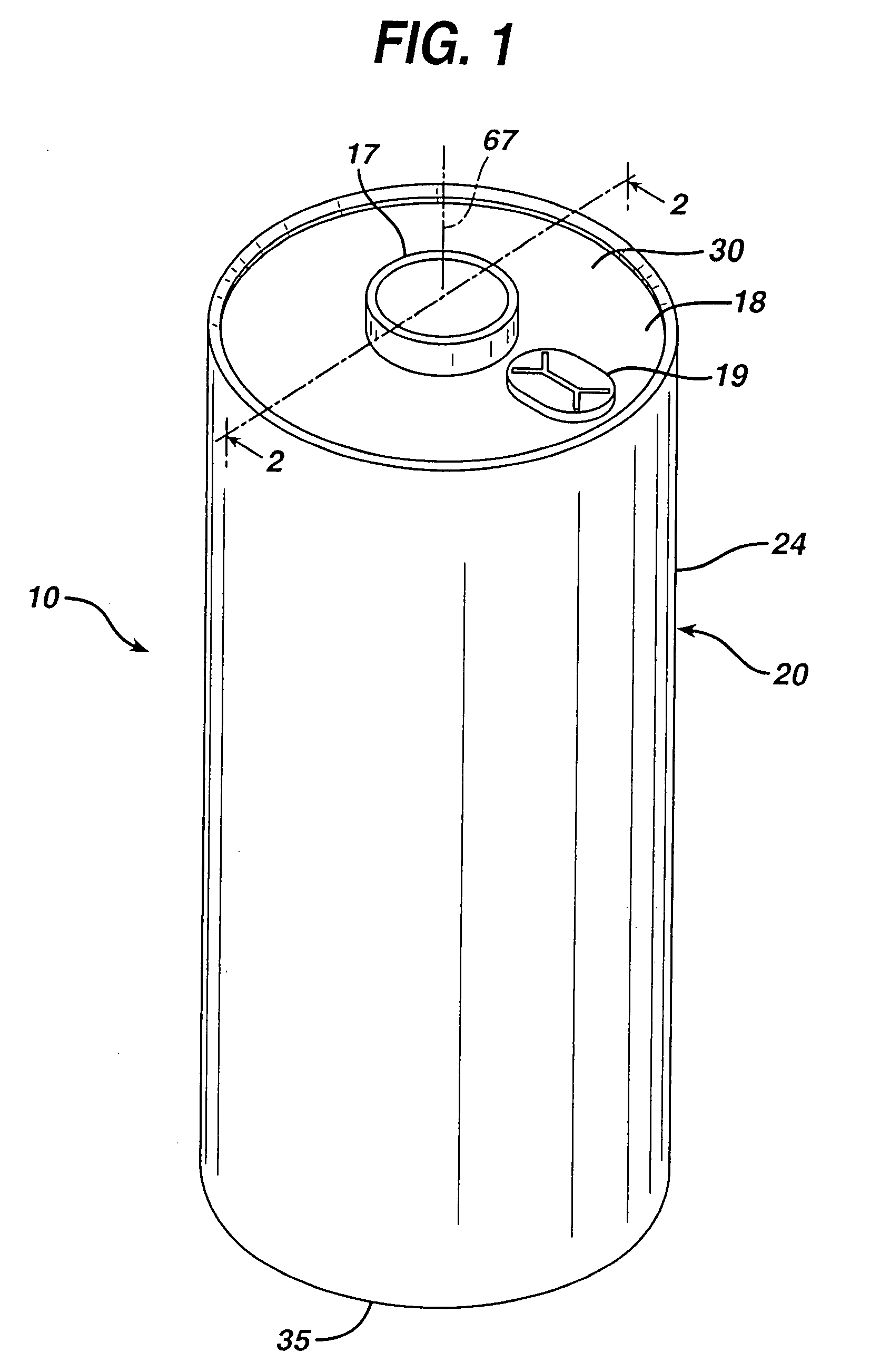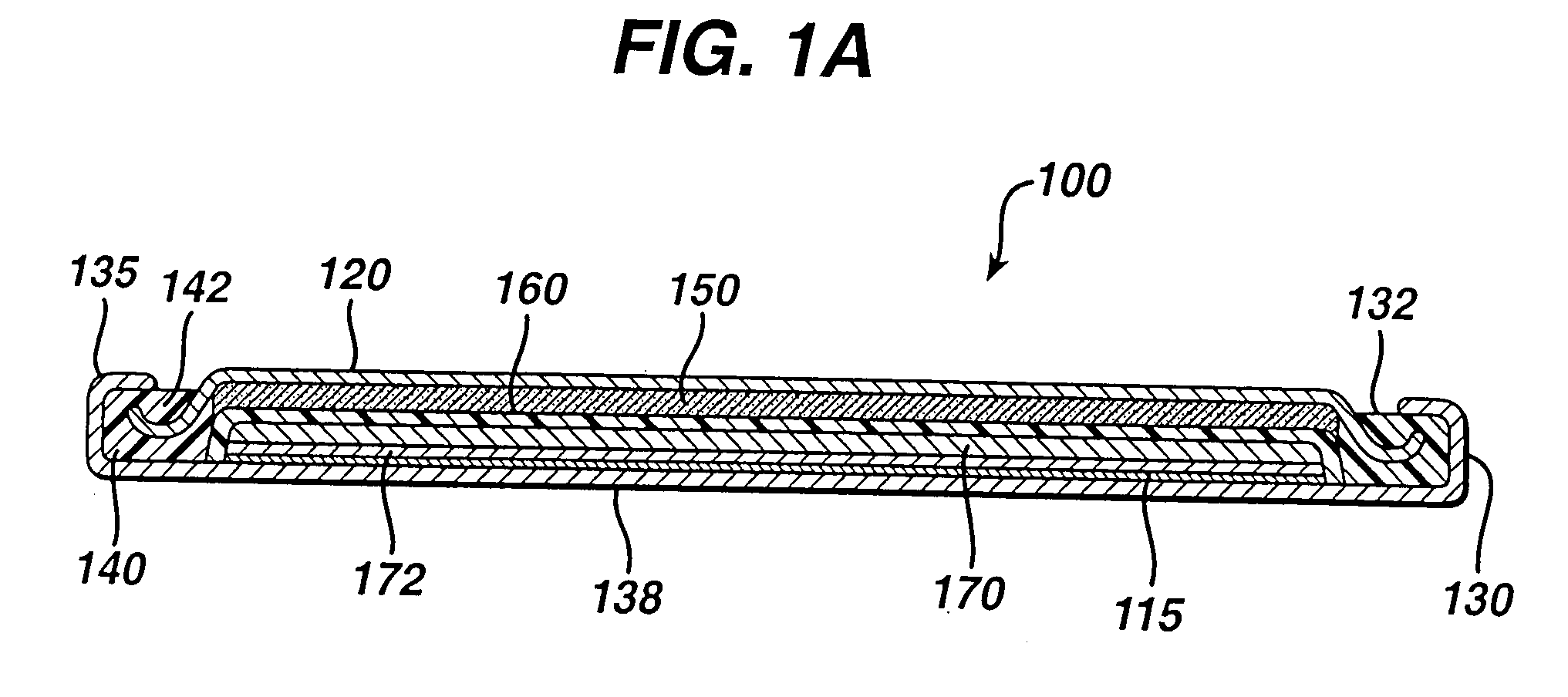Lithium cell
a lithium cell and preconditioning technology, applied in the direction of primary cell maintenance/service, secondary cell servicing/maintenance, non-aqueous electrolyte cells, etc., can solve the problems of reducing the efficiency of the cell, affecting the cell performance, and affecting the cell function, so as to improve the cell performance, improve the voltage profile, and improve the effect of energy outpu
- Summary
- Abstract
- Description
- Claims
- Application Information
AI Technical Summary
Benefits of technology
Problems solved by technology
Method used
Image
Examples
example
Experimental Test Lithium Coin
Cells with Cathode Comprising FeS2
[0082]Experimental test Li / FeS2 coin cells 100 (FIG. 1A) were prepared as follows:
Experimental Test Cell Assembly:
[0083]A coin shaped cathode housing 130 of nickel plated steel and a coin shaped anode housing (cover) 120 of nickel plated steel is formed of a similar configuration shown in FIG. 1A. The finished cell 100 had an overall diameter of about 25 mm and a thickness of about 3 mm. The weight of FeS2 in the cathode housing 130 was 0.125 g. The lithium was in electrochemical excess.
[0084]In forming each cell 100, an Arbor press with a 0.780-inch die was used to punch out two stainless steel grids (316L-SS EXMET expanded metal foil). One stainless steel grid was centered inside of coin cell cathode housing 130 forming cathode current collector sheet 115. The other stainless steel grid (not shown) was resistance welded to the inside surface of closed end of the anode housing (cover) 120. The grids were welded to the...
PUM
 Login to View More
Login to View More Abstract
Description
Claims
Application Information
 Login to View More
Login to View More - R&D
- Intellectual Property
- Life Sciences
- Materials
- Tech Scout
- Unparalleled Data Quality
- Higher Quality Content
- 60% Fewer Hallucinations
Browse by: Latest US Patents, China's latest patents, Technical Efficacy Thesaurus, Application Domain, Technology Topic, Popular Technical Reports.
© 2025 PatSnap. All rights reserved.Legal|Privacy policy|Modern Slavery Act Transparency Statement|Sitemap|About US| Contact US: help@patsnap.com



